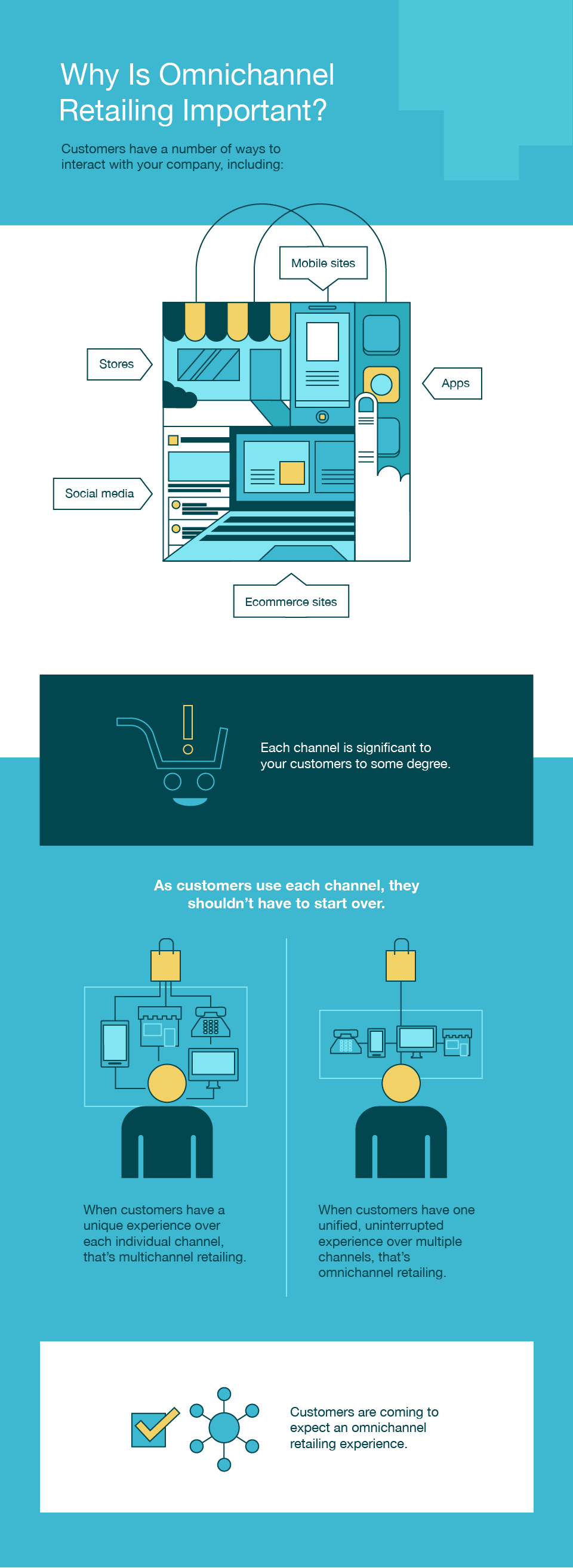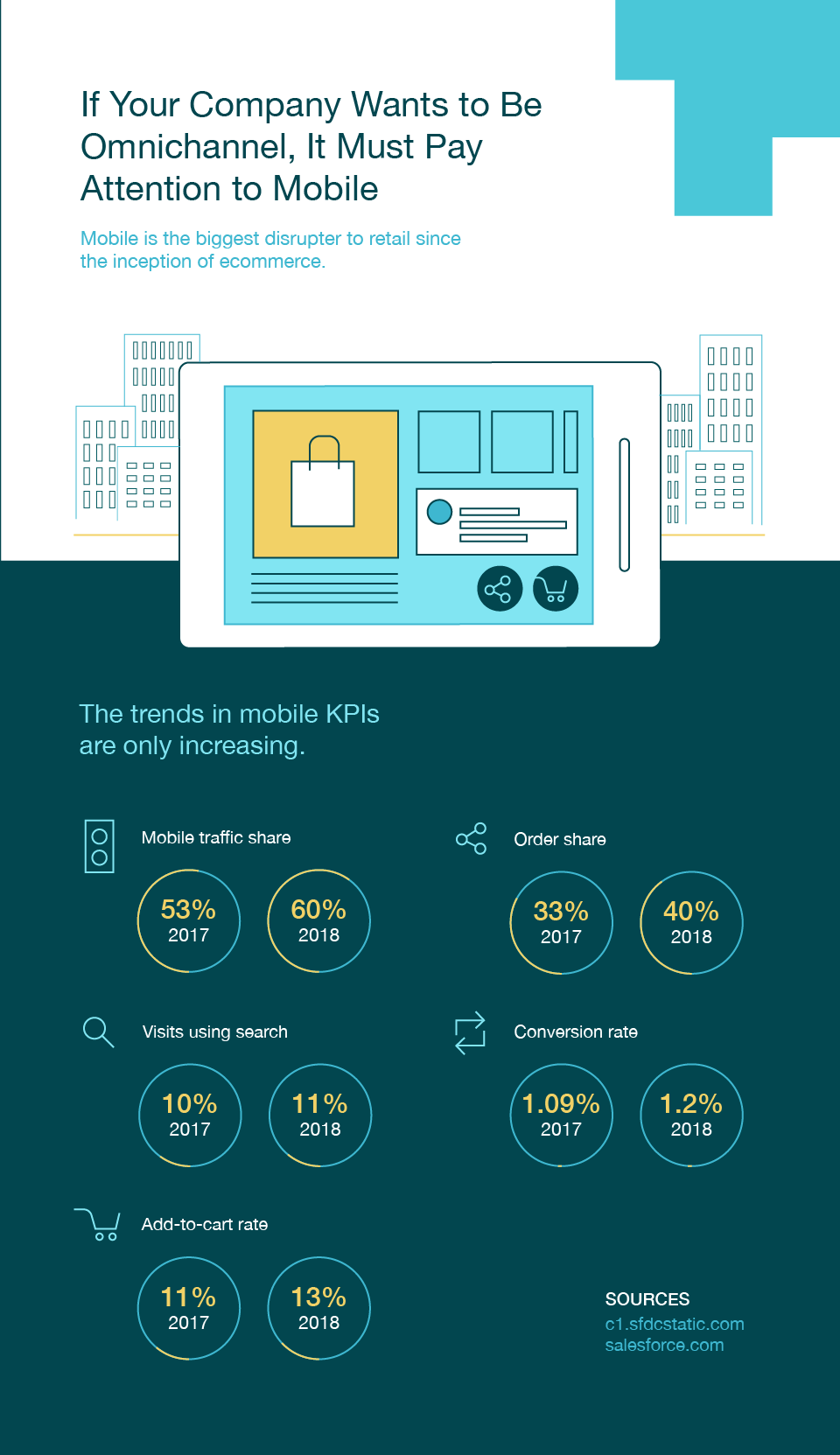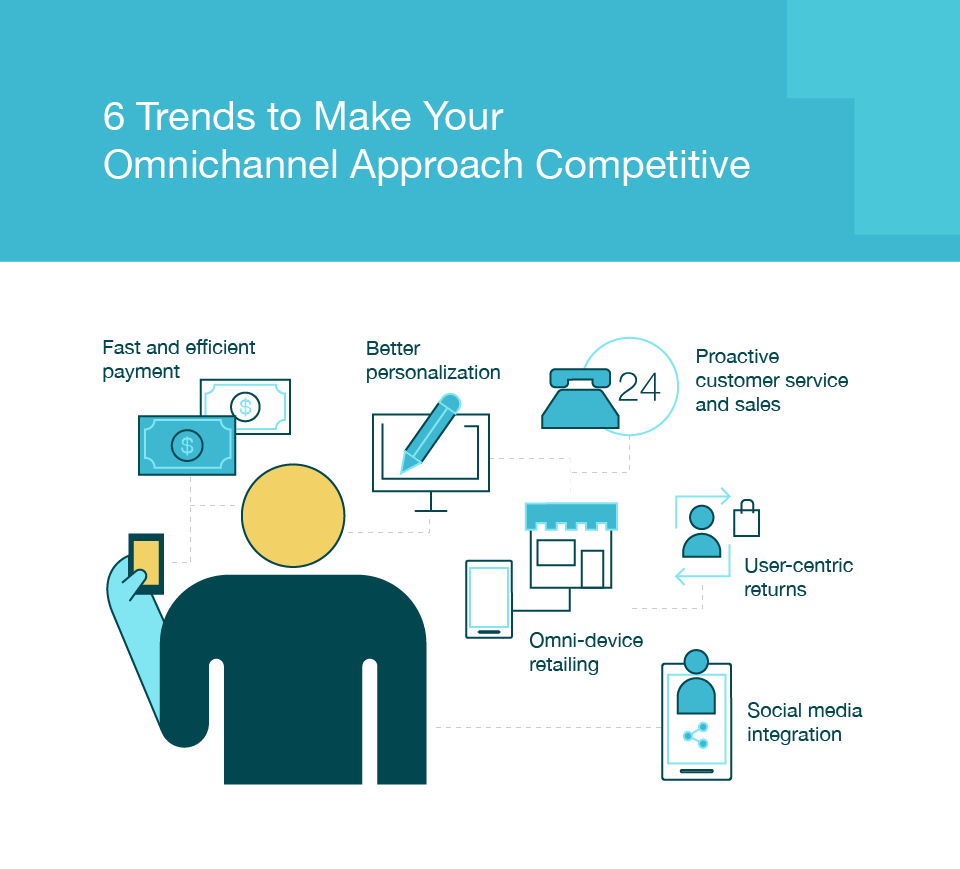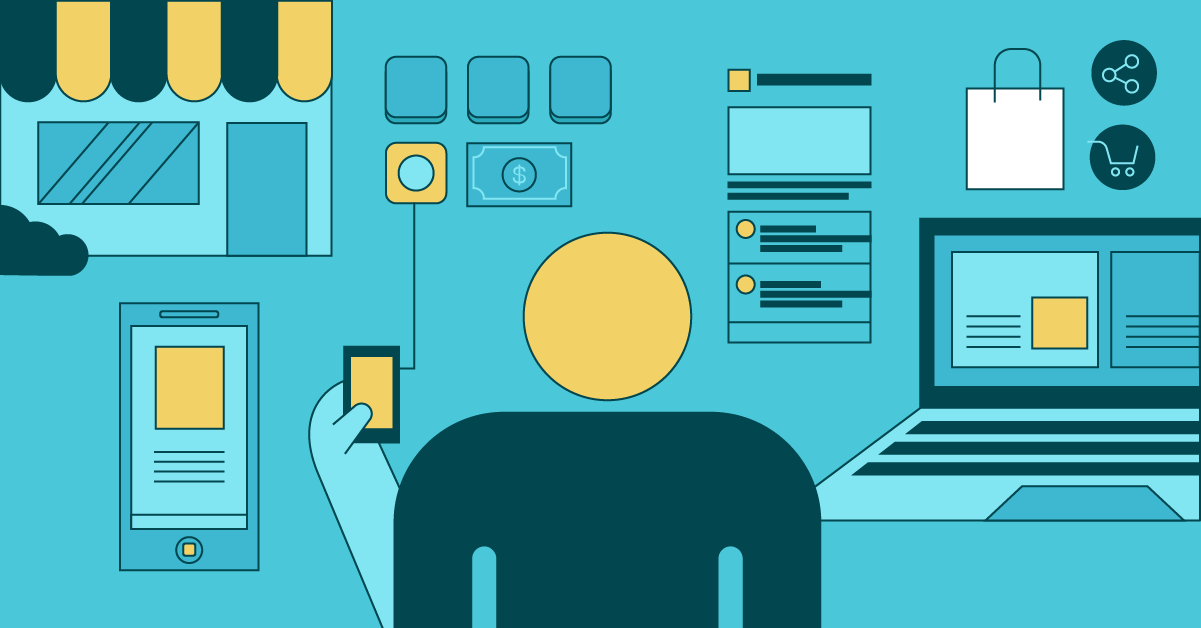Over the years, commerce evolved from single channel, to multichannel, and now omnichannel. To make the sale, companies need to at least be successful with single channel retail. As consumers came to expect more from brands, multichannel set the new standard. Long-term, omnichannel is what all businesses will now strive for.
To effectively manage an omnichannel approach, retailers must integrate the user experience across digital, physical, social media, mobile, phone, instant messaging, and more. This provides customers with a seamless user experience at each brand touchpoint.
What is Omnichannel Retailing?
Omnichannel retailing is commonly confused with multichannel retail. For many businesses, an expansion of sales channels can simplify the way consumers interact with your brand, and that demonstrates an organization’s ability to deploy multichannel marketing and sales well. The omnichannel retailing definition, on the other hand, melds all available channels together (from the customer’s perspective) so consumers can pick up where they left off using a completely new medium and method of communication.
In other words, a multichannel approach helps you reach a wide variety of customers. An omnichannel approach enables businesses to personalize customer communications in a way that anticipates the user’s needs even before they do.
Why Is Omnichannel Retailing Important?
- Customers have a number of ways to interact with your company, including:
- In store
- Through ecommerce sites
- On mobile sites
- Through apps
- Over social media
- Each channel is significant to your customers to some degree.
- As customers use each channel, they shouldn’t have to start over.
- When customers have a unique experience over each individual channel, that’s multichannel retailing.
- When customers have one unified, uninterrupted experience over multiple channels, that’s omnichannel retailing.
- Customers are coming to expect an omnichannel retailing experience.

This is important because the data on how shoppers prefer to interact with brands can be misleading or conflicting. Some sources estimate, based on research, that consumers are “more likely to shop for almost all types of products online instead of in stores.” Other sources, such as The Census Bureau of the Department of Commerce, tell you consumers make the majority of their purchases in store: “Ecommerce sales in 2018 accounted for 9.7 percent of total sales.”
When you use a multichannel approach, these conflicting statistics might lead you to put more effort or energy into your customer service protocol in one area — for example, reduce your social media team and increase the number of reps in your store — when it would actually be more advantageous to offer it somewhere else. An omnichannel retail strategy lets you use all of the tools provided for one channel across your other channels. It also allows you to access data gathered from one campaign or contact with a customer and use it at their next touchpoint, even if that connection is from one platform to another.
Here’s an example of omnichannel retailing. Sue browses your website on her desktop computer and saves a few items in her cart. She runs out of time to finish her purchase before she leaves for her next appointment. When Sue returns to shop through the app on her phone, those items are still saved in her cart for easy checkout. You may also send a follow-up email to Sue to remind her she can place her order any time. This approach uses three different channels that are interconnected to offer the same experience and continue the same interaction. Doing so makes it easy for your shoppers to finish the process without having to start over again.
If Your Company Wants to Be Omnichannel, It Must Pay Attention to Mobile
- Mobile is the biggest disrupter to retail since the inception of ecommerce.
- The trends in mobile KPIs are only increasing
- Mobile traffic share:
- 2017: 53%
- 2018: 60%
- Visits using search:
- 2017: 10%
- 2018: 11%
- Add-to-cart rate:
- 2017: 11%
- 2018: 13%
- Order share:
- 2017: 33%
- 2018: 40%
- Conversion rate:
- 2017: 1.09%
- 2018: 1.2%
- Mobile traffic share:

Six trends to bring your omnichannel approach into 2019 and beyond
For businesses eager to transition from multichannel retailing to omnichannel, it’s important to think outside the box and apply omnichannel retailing strategies in your upcoming campaigns. This should give you a competitive advantage over other companies in your industry. It raises the operating standards for your customer experience online, offline, and through any other medium customers use to interact with your business.
To go above and beyond, here are six omnichannel retailing trends you should consider integrating into your long-term strategy.
- Better personalization. Shoppers expect companies to know who they are. To overcome this, brands can leverage the data collected through multiple user touchpoints to tailor advertisements and messages that align with each customer’s current search and needs. When all your channels are connected, every consumer touchpoint helps to reinforce your competitive advantage and strengthen your relationship with customers.
- Fast and efficient payment. Between blockchain solutions, contactless payment, and more, consumers expect easier methods for checkout whether it’s online, in-store, or over the phone. Increasingly, shoppers will gravitate toward brands that no longer require them to enter their billing address, 16-digit credit card number, expiry date, and security code to complete their purchase — especially for repeat customers.
- Omni-device retailing. For consumers, the ideal shopping experience lets them toggle between devices in a manner that allows them to resume their previous experience. Rather than start from the beginning, users should be able to pick up where they left off. Brands that enable that level of service will positively impact the customer experience.
- Proactive customer service and sales. Omnichannel retail gives businesses access to information that helps meet the customer's expressed, latent, and undiscovered needs. This lets you determine the best solutions that can address their underlying problems, whether it’s product replenishment, an accessory they should add to their purchase, or a simple reminder of why they researched you in the first place. With proactive service, you help them complete their order and get exactly what they were originally looking for using any channel or the method that’s easiest for them.
- Social integration. Visually-oriented audiences increasingly purchase products directly from their preferred social media platforms. This creates an opportunity for omnichannel retailers to figure out new ways to integrate social content into their websites or to add their product listings into social media posts, and more.
- User-centric returns. Whether it’s in store or through the mail, through scheduled pick-ups or strategic drop-off points, shoppers want more convenient options to return their purchases. To accommodate this, retailers must upgrade the way they manage their inbound logistics and look for fast and cost-efficient methods to accomplish easier returns.
6 Trends to Make Your Omnichannel Approach Competitive
- Better personalization
- Fast and efficient payment
- Omni-device retailing
- Proactive customer service and sales
- Social media integration
- User-centric returns

How to build omnichannel retailing strategies for a unified commerce experience
The customer journey can be a long one. Not every shopper will buy on first contact with your brand. In fact, most consumers require several contacts before they decide to commit to a purchase. With large ticket items, many customers research in-store and online before finalizing their decision. This may mean multiple visits to your website and retail locations, and perhaps a direct message or two. When you understand the target demographic for your products, you can develop and deploy omnichannel communications and marketing strategies that facilitate a more seamless customer journey.
When you recognize that a portion of your audience uses initial touchpoints as data gathering exercises before they finalize their purchasing decisions, then you can prepare yourself by making your brand stand out among the competition. To do this successfully, you can proactively provide shoppers with information that compares you against your competitors and highlights your biggest advantages. Additionally, you can offer incentives, such as coupons and special promotions, to move exploratory buyers closer to the decision-making stage.
A unified commerce experience lets you put all of the pieces of the customer journey together. Shoppers can start from their computer, continue the browsing experience on their phones, check out the app, and visit your closest retail locations. No matter where and how they contact you, your company should be prepared to pick up where the customer left off to ensure a smooth user journey. With multichannel retailing, consumers generally have to start the process over from the beginning again. When you apply omnichannel retail, though, all company representatives at each new touchpoint are equipped with the data they need to quickly guide shoppers through to the next stage of their respective, personal sales funnel.
Through unified commerce, which enables omnichannel retailing, brands go beyond simply connecting their channels. They combine all user information culled from each channel into one easy-to-read dashboard. Cloud technology makes your customer's journey available for any personnel who might be helping them and any of your marketing staff who might include that user in outreach efforts.
Unified commerce means that the customer can count on the same level of care, no matter where they find you. Consistency and continuity of service helps elevate your brand against the competition. This reinforces brand trust among consumers, resulting in higher sales conversions and long-term customer loyalty.
Share "The Trends to Watch in Omnichannel Retailing" On Your Site




